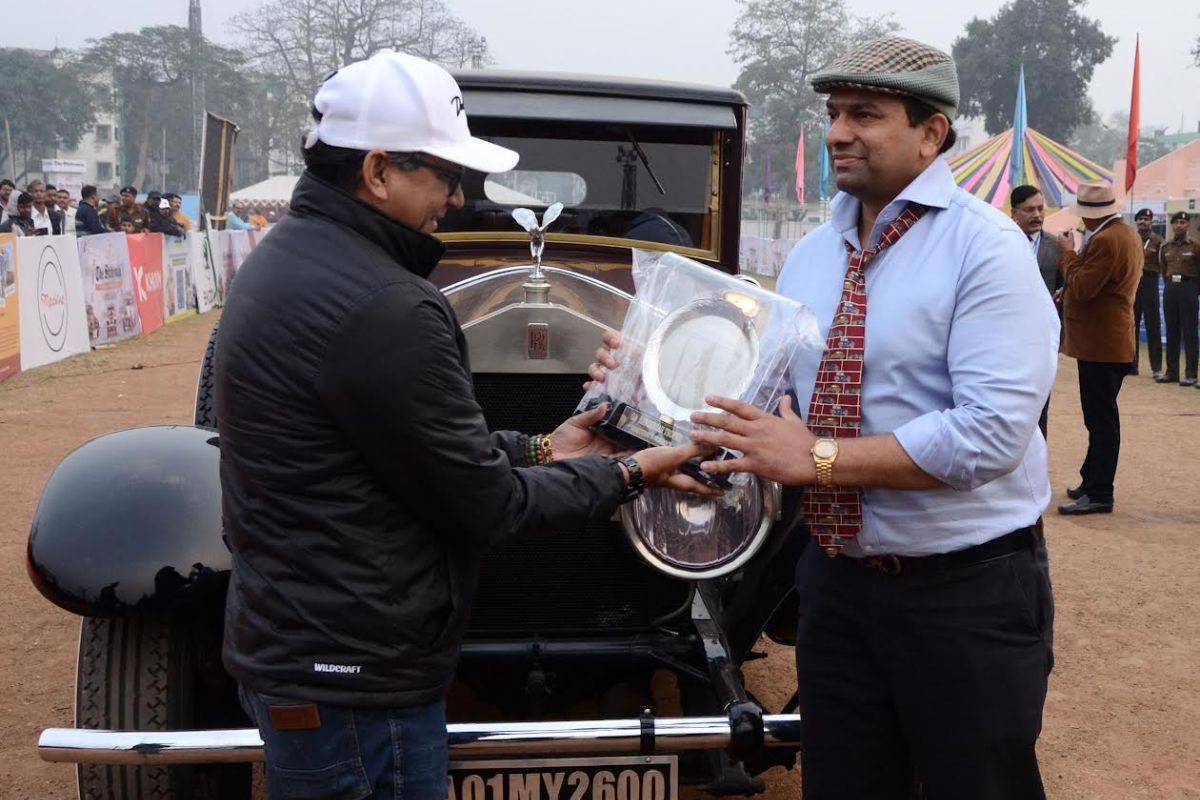Meet the maestro of metal and the virtuoso of vintage, who doesn’t just restore cars but turns them into rolling symphonies of bygone eras. Fresh off a triumphant spree at The Statesman Vintage and Classic Car Rally, Shrivardhan Kanoria is not just a collector; he is a commander of car charisma. His trophies last week included The Statesman Chairman Trophy, GA Randerian Trophy and The Shashi Kanoria Trophy.
The Statesman got to talking with Mr Shrivardhan Kanoria, where the car restorer and collector spoke about his journey. So, buckle up for a ride through time with the wizard of wheels, where every restoration tells a story, and every trophy is a testament to his automotive mastery.
Q. How did your journey of being a restorer and collector of cars begin?
My familial ties to vintage cars stretch across three generations. Late Harish Chandra Aggarwal, my maternal grandfather, distinguished himself as a revered collector during the 50s and 60s in Calcutta. Known for acquiring premium vehicles from the Rajas and Maharajas, he notably participated in the inaugural 1968 Statesman Vintage and Classic Car Rally, presenting a fleet of 12 to 14 cars, including 6 to 7 Rolls Royces. His philanthropy extended to donating a Ford Model T to Junior Statesman, showcasing a unique focus on collection rather than restoration. Inspired by my grandfather’s passion, my father, Late Shashi Kumar Kanoria, elevated the family hobby into a serious commitment. Commencing in 1968 with a Ford Model T, he broadened his collection to include a 1906 Renault, which debuted in the first Statesman Vintage and Classic Car Rally. Distinguished by his distinctive approach, he acquired cars in varying states of disrepair, diligently restoring them throughout the year for an exclusive unveiling at The Statesman rally in the 70s, 80s, and early 90s. Shashi Babu’s rally participation became a highly anticipated event, marking a significant milestone in his car restoration journey. For me, growing up with this rally was akin to celebrating a festival – as integral as Diwali, Holi, birthdays, and anniversaries. I have fond memories of attending the rally as a two-year-old in 1983. The 1906 Renault, part of our collection, boasts the highest number of trophies in The Statesman rally to date. My father was my teacher and I learnt everything from him. When he passed away, the world thought that the legacy of Shashi Kanoria had come to an end, but with his good blessings, I’m still in the process of restoring and collecting the cars you can see today.
Q. What are the challenges that you face as a restorer?
Restoration, in my view, doesn’t adhere to a strict rulebook. Particularly when it comes to acquiring parts, I steer away from imports. Instead, I opt to craft my own components, believing it results in superior quality compared to imported alternatives, which often fall short of the original standard. Taking charge of the design process, I personally oversee the fabrication of components that may have become obsolete. Engaging in extensive reading on restoration practices is also a crucial aspect of my approach.
Q. What parts of vintage cars usually wear out the most over time?
The tyres. There is, however, no difficulty in fabricating them if you know how to.
Q. Do you think changing parts in a vintage car alters its authenticity?
Certainly not. The process is analogous to changing clothes or colouring our hair. Engaging in these activities doesn’t alter our fundamental identity as human beings. Similarly, with cars, the act of restoration, including necessary repairs and repainting, serves to enhance their functionality and longevity rather than fundamentally transforming their essence. It’s about preserving and revitalising the inherent qualities of the vehicle rather than changing its intrinsic nature.












